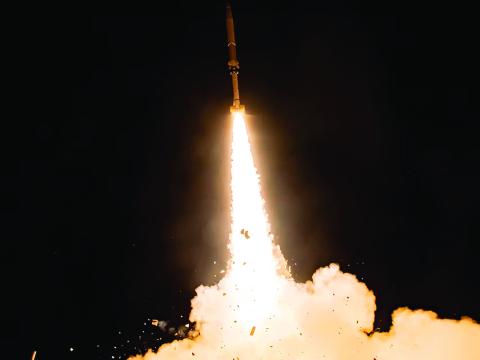President's Commentary: Space Vulnerabilities Come Down to Earth
President Donald Trump’s recent call for a U.S. Space Force that would potentially be on par with the Army, Navy, Marine Corps, Air Force and Coast Guard shows a renewed recognition of the importance of space.
President Donald Trump’s recent call for a U.S. Space Force that would potentially be on par with the Army, Navy, Marine Corps, Air Force and Coast Guard shows a renewed recognition of the importance of space. This presidential proclamation has been met with varying responses. Regardless of one’s position on the topic, it begs for a discussion that is long overdue. The Commission to Assess U.S. National Security Space Management and Organization, often referred to as the Rumsfeld Commission, put into place more than 17 years ago a solid set of findings and recommendations on national space policy. Some of the recommendations have been adopted, while others have fallen by the wayside for a variety of reasons. Yet the report provides a thoughtful basis for the way forward.
It is questionable whether the American public truly understands our deep reliance on space in everyday life and the fragile nature of that reliance. Many vital activities center on the uninterrupted daily delivery of capabilities from space, whether it’s GPS-provided timing for information networks, remote sensing for improving agriculture and monitoring weather patterns, or critical command, control, communications, computers, intelligence, surveillance and reconnaissance (C4ISR) functions. Failure to maintain space superiority threatens the very character of everyday life and places steep impediments to our ability to provide national security. Suitably applied, space-based capabilities provide asymmetric advantages strategically, operationally and tactically. Whoever controls space will be in a strong position to shape and influence international security objectives across a broad range of situations. At the same time, the nation that has the most to gain from space also has the most to lose if that capability is denied or degraded.
Over the past decade, the number of countries with space capabilities has grown significantly. As evidenced in Middle East operations and elsewhere, space is once again becoming an increasingly contested domain. At least 11 nations have demonstrated the capability to build and launch their own satellites. Two of them, China and Russia, are labeled in the National Security Strategy as revisionist powers, while Iran and North Korea are categorized as rogue regimes bent on destabilizing their respective regions. These countries and others seek methods of exploiting vulnerabilities in U.S. space-based capabilities to be able to strike at the U.S. critical infrastructure and national security assets.
China has openly stated that it intends to become an international space power. In 2007, China demonstrated its emerging space prowess by destroying a weather satellite, and it continues to develop and test its antisatellite capabilities. Furthermore, it has begun integrating its space and cyber capabilities. One only has to look at China’s aggressive behavior in the East China Sea to imagine how it would act if it had control of space. Adversarial space-based capabilities strongly suggest that the United States needs to review and re-emphasize its space program.
We duly recognize space as a force multiplier and that U.S. space capabilities are at risk, owing to counterspace threats including kinetic, electronic and cyber, among many others. The likelihood of some level of confrontation in space is rising. Additionally, a wide paucity of protected space-based capabilities exists at the strategic, operational and tactical levels, along with a rapidly expanding reliance on those capabilities. One has to look no further than the F-35 program to begin to appreciate the need for more protected space-based capabilities.
Ensuring space superiority depends on multiple elements. One involves thoughtfully identified and developed capabilities based on a comprehensive, robust space architecture that integrates commercial capabilities and promotes technology insertion. Another is a strong and agile industrial base underwritten by a reinvigorated STEM base. We need effective protection of space-based and ground-related capabilities, along with offensive capabilities that can be realistically wielded against adversaries who believe that we are willing to use them. Key decisions lie ahead: capability versus cost versus complexity versus other relative needs. There is little room for wasted or duplicated efforts.
In the end, whether the United States adapts a space force, leaves this responsibility with the Air Force or chooses some other option, we must redouble our efforts and recommit ourselves to maintaining space superiority. Contested space requires new capabilities, alternatives, tradeoffs and partnerships. We must share and leverage our national expertise across all elements of government, industry and academia. Political and bureaucratic barriers need to be broken down and eliminated. Opportunities to share costs and exchange technologies with industry and trusted allies must be further explored. To do otherwise places us at unacceptable risk.




Comment
I submit that nothing would
I submit that nothing would disrupt our every day lifestyles more should the U.S. lose the ability to ensure the reliability of our GPS.
Comments